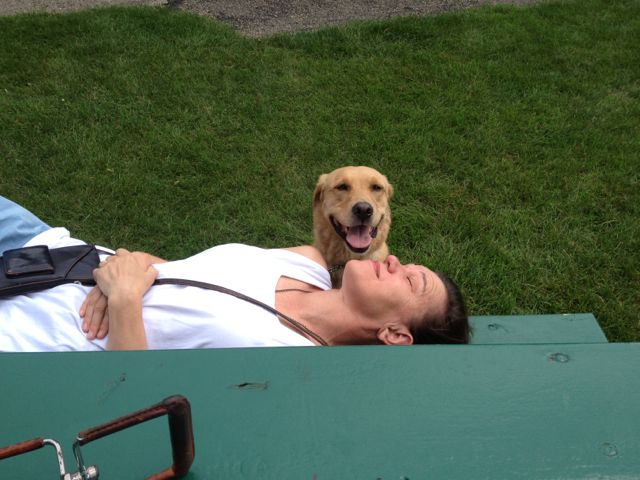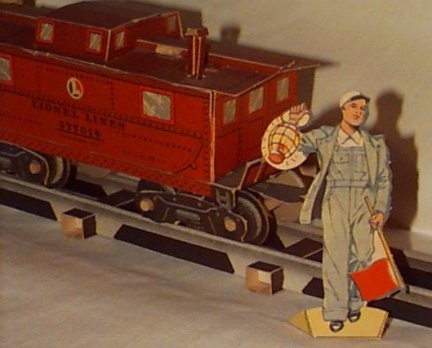Mondays with Mike: The kindness of strangers
September 1, 2014 • 21 Comments • Posted in blindness, Mike Knezovich, Mondays with Mike, parenting a child with special needs, UncategorizedEvery time we visit our son Gus in his little yellow house in the quiet little town of Watertown, Wis., we love seeing him. And we are always, just a little, discombobulated. Even after 12 years of his living away from us.
Gus is severely disabled. He can’t talk. He can walk a short distance, clumsily, using a walker, but he spends more time in his wheelchair—which he can propel and steer well enough to get around the little ranch home he shares with three other developmentally disabled guys, and with the staff of Bethesda Lutheran Communities, which operates the home.
He invariably recognizes us, letting us know by letting out a sort of shriek of joy, just as he claps his hands right in front of his face. He makes Gus noises—anyone who’s been around him knows what that means. For those who haven’t, I don’t think I can describe them adequately. But they tell you a lot—whether he’s happy, sad, puzzled, anxious.
Saturday—when we visited to celebrate (in advance of his 28th birthday on September 3)—he was especially pleased to see us. The shrieks and claps and laughs went on pretty much all afternoon.
We walked him in his wheelchair to the little park across the street. We wheeled up to a picnic table, where Beth reclined to catch some rays. Some kids were there—and it was a scene that I remember well from my youth but which I rarely see today. They were anywhere from, o,h 5 to 11 years old. They were playing kickball on the baseball diamond, while their bikes sat parked near the pavilion.
There were arguments about in-bounds and out-of-bounds, cries of joy when some one kicked a good one. And then they broke up and reconvened to start a new game of dodgeball of sorts on the playground. It was a game that an outsider could only partly understand, but they clearly had crafted and memorized their own rules.
What really stood out about the whole scene: There was not an adult in sight. The kids had organized this themselves. It was straight out of our childhoods. During summer vacation, we’d leave early and come back late. Entertaining ourselves with invented games, getting bored, inventing new ones. It all was kind of quietly astounding, a dreamy escape to the past.
Gus enjoyed it all, too. He can tell when people are having fun, and he gets tickled by that.
While we sat and took in the breeze and the sun, a little guy—the one I reckon to be 5—came by to pet Whitney, who was off harness. He told us about his dog. Pointing to Gus, he asked whether “that guy broke his knee.” After some back and forth, we surmised that his grandma had “broke her” knee and had been in a wheelchair, hence the question.
We eventually said goodbye and walked Gus back home. We said our goodbyes. It was a good visit.
When he first moved away, we’d stay longer, and usually stay overnight. Things changed when we realized: He’s happy to see us, but really, he’s got his own life now. Not like our contemporaries’ kids—who are going off to college, starting careers and such. But it’s his life nonetheless. He’s happy to see us, we’re happy to see him. It’s our normal.
Always, I wish we lived closer than the 2-1/2 hour drive we have, so we could just drop by when we felt like it.
But always, I leave grateful that he has a home. That he’s done just fine out of our house. There have been glitches, sure, but there were glitches when he lived with us. We didn’t get everything right.
There was a time when I thought I could never let him live elsewhere. To trust him to the world. That’s what all parents have to do. In that way, Beth and I are like all parents who watch their kids leave. Except we’re not. Of course we’re not.
Years ago Beth, in her infinite wisdom, arranged for me to talk to another father who’d thought the same way about his son as I did—no one can take care of Gus like we can. Like I can. And this father ended up hitting an inevitable wall.
That helped me see ahead, and realize, I needed to learn to trust Gus to the world. For me, for Beth, and for him. So far the world’s doing a good job.




